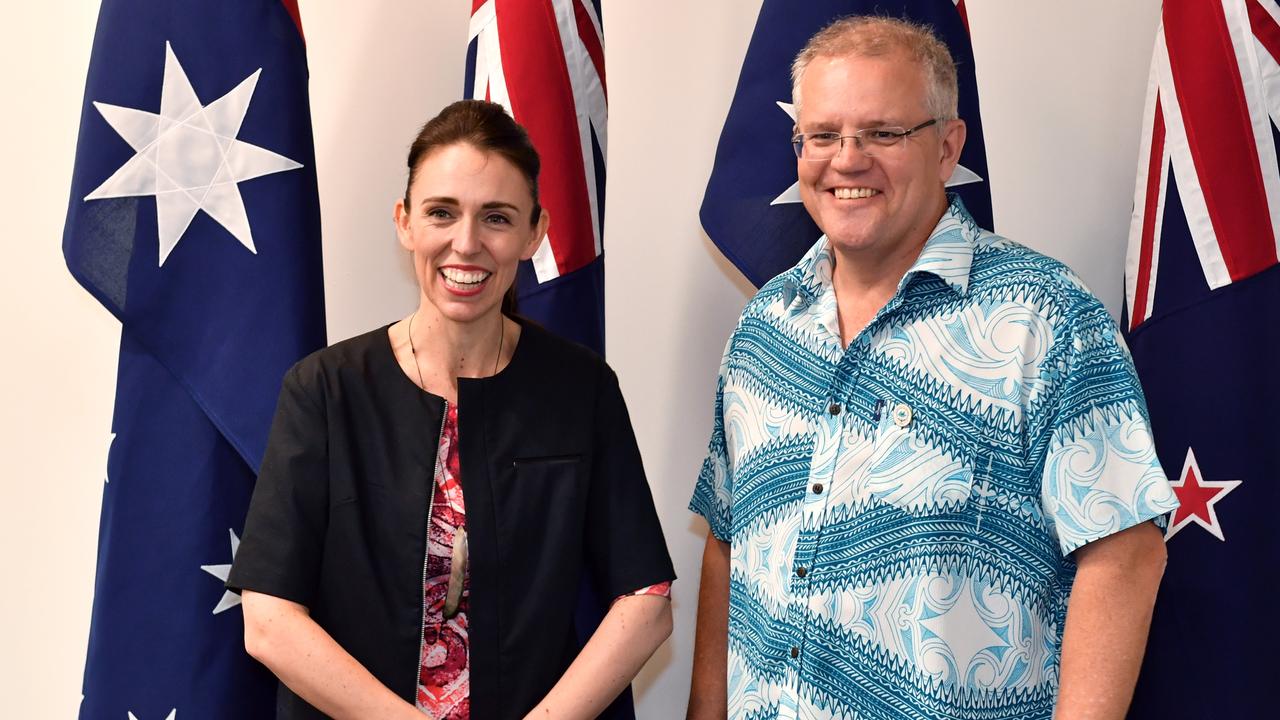Our nuclear armament position is worth reviewing
The debate about North Korea’s acquisition of an intercontinental ballistic missile capable of targeting Australia raises three important questions for our defence policy.
First, there is the question of US extended nuclear deterrence and the conditions under which we would no longer have confidence in the US protecting us from nuclear attack. Second, what sort of ballistic missile defence we might acquire to defend ourselves. Third, should we be thinking about reducing the lead time for acquiring our own nuclear weapons?
Throughout the Cold War, Australia depended on the US for extended nuclear deterrence. The Soviet Union understood that a nuclear attack on the US’s close allies would be tantamount to an attack on the US. Even so, there was always the debate in Canberra about whether Washington would be willing to put New York at risk of nuclear obliteration by retaliating against the Soviet Union for a nuclear strike against Canberra.
The difference between Pyongyang now and Moscow in the Cold War is that the Soviet leadership well understood the risks of nuclear annihilation. They were involved in serious discussions with the Americans for more than 20 years about strategic nuclear arms controls. Each side understood the other’s nuclear war-fighting doctrines and risk management.
Pyongyang, on the other hand, has had no such dialogue with the US and may misjudge the conditions under which Washington may decide to mount a nuclear strike.
The scenarios under which Australia would have to review its confidence in the US’s extended nuclear deterrence include North Korea using a nuclear weapon against South Korea or Japan and the US not responding because of the fear of losing Los Angeles.
Such a situation could provoke Japan and South Korea to rapidly develop nuclear weapons of their own and thus raise the spectre of nuclear proliferation in our region.
There is the further issue of whether confused declaratory signals about the use of nuclear weapons by US President Donald Trump is already eroding faith in US extended nuclear deterrence.
The problem here is that the theory of extended nuclear deterrence has never been tested in practice yet.
As to ballistic missile defence, Malcolm Turnbull has announced Australia is interested in acquiring missile defence for its air warfare destroyers and the new anti-submarine warfare frigates. He said this would enable those warships “to engage threat missiles at long range”.
Australia’s geography makes effective ballistic missile defence particularly challenging against ICBMs because terminal speed exceeds 7km a second. Current US missiles, such as SM-6 and SM-3, can make terminal and mid-course intercepts respectively against theatre and medium-range ballistic missiles and are deployed on Aegis warships. If such warships were deployed, for example, in the Sea of Japan or Yellow Sea, they conceivably could destroy North Korean ICBMs during their vulnerable launch phase.
It would make sense to similarly configure our AWDs and ASW frigates with a ballistic missile defence capability. This would give Australia 12 ships capable of BMD and the ability to share sensors and interceptors among the fleet and with other nations’ Aegis-equipped platforms, including those of Japan and the US.
Finally, there is the sensitive question of under what conditions might Australia want to acquire its own nuclear weapon deterrent. Australia is a signatory to the Treaty on the Non-Proliferation of Nuclear Weapons. For us to leave the treaty would require persuasive arguments of threat to our survival under the “supreme interests” clause. In the foreseeable future, we do not face such an existential threat.
However, it needs to be remembered that Australia signed the treaty in 1970 but did not ratify it until 1973. The reason for this was, among other things, that the defence committee’s secret advice to the government in 1968 was that it was important for Australia to “maintain its freedom to reduce the lead time” for the development of a nuclear weapon capacity against a serious breakdown in the international order.
The defence committee’s guidance in 1975 was that the increased likelihood of nuclear proliferation, and “the possible requirement to keep the lead time for Australia matched with contingent developments in other countries”, called “for a review periodically of Australia’s potential for development of nuclear weapons”.
A similar judgment was expressed in the 1983 defence committee’s advice at the height of Cold War tensions about ensuring the lead time “could be matched with developments in other countries should government so decide”.
There is no present requirement foreseen for Australia to develop a nuclear weapons capacity. But the history of advice to successive governments suggests, should our strategic circumstances look like deteriorating disastrously, it might be prudent to revisit reducing the technological lead time. It needs to be understood that any steps taken in this direction would seriously concern the US and other countries of strategic interest to Australia and might stimulate further nuclear proliferation. But in the unlikely event Australia went down this path, we would not be the only state reconsidering its options.
Paul Dibb is emeritus professor of strategic studies in the College of Asia and the Pacific at the Australian National University. He is a former deputy secretary of Defence and director of the Joint Intelligence Organisation.



To join the conversation, please log in. Don't have an account? Register
Join the conversation, you are commenting as Logout